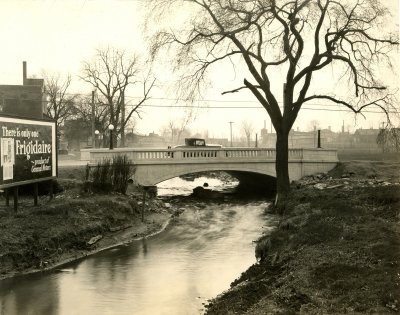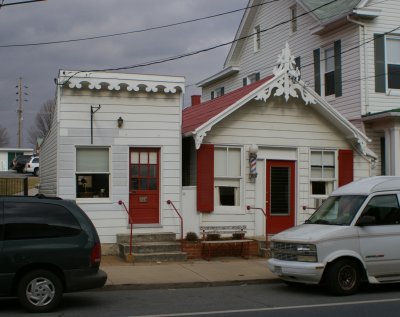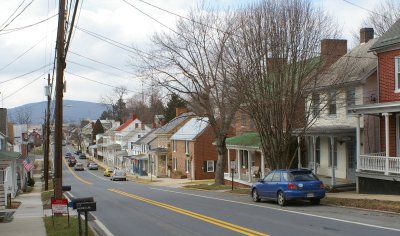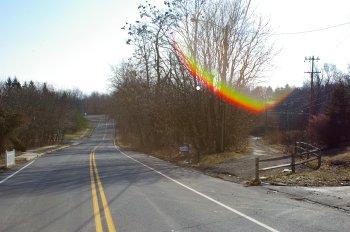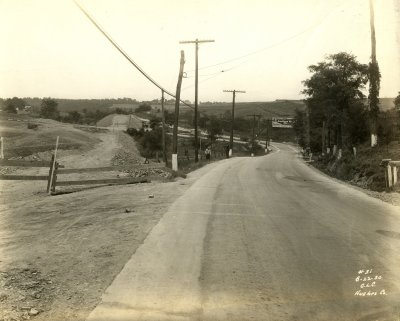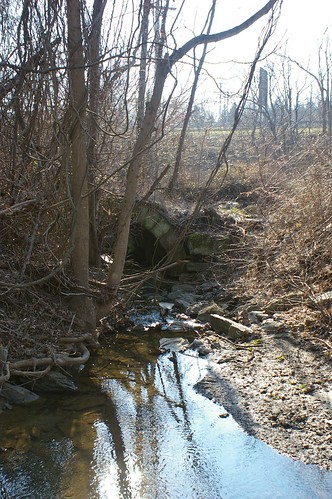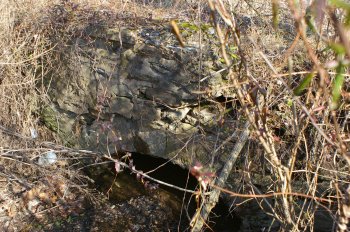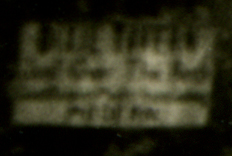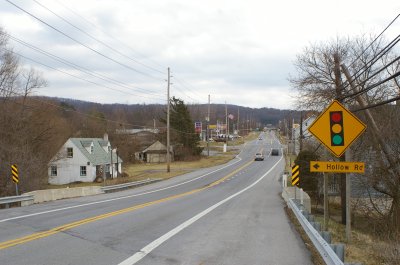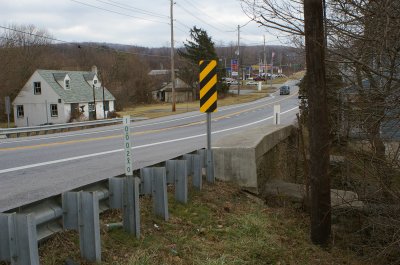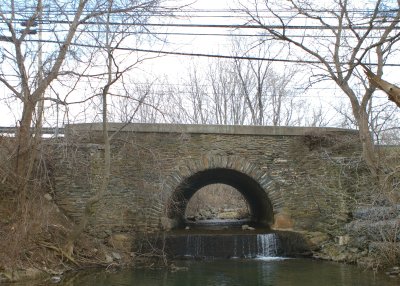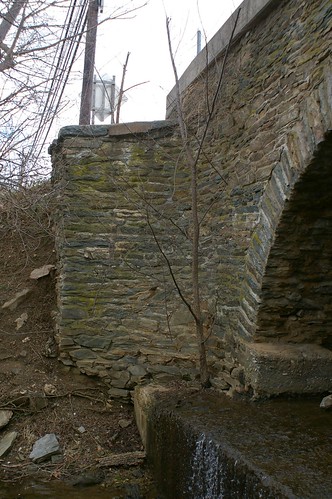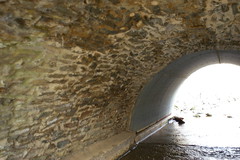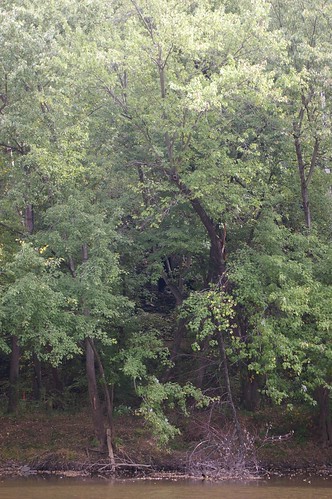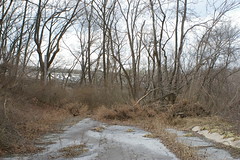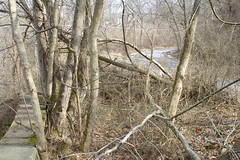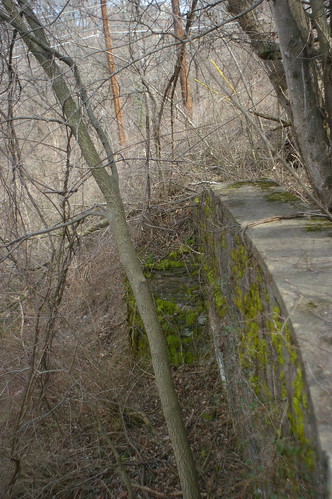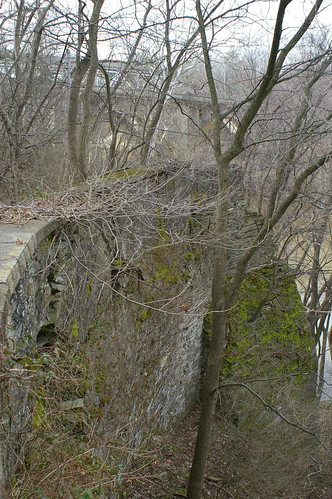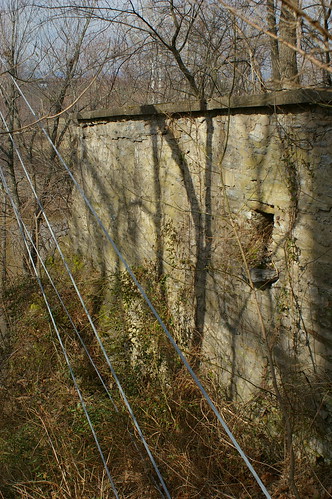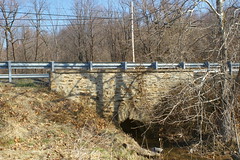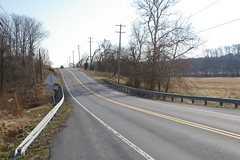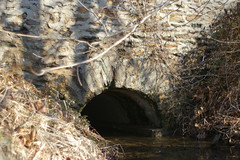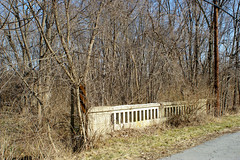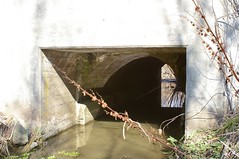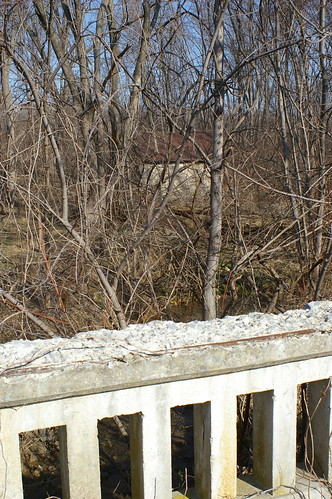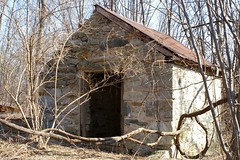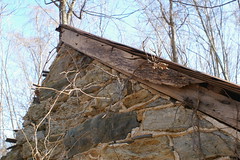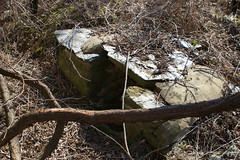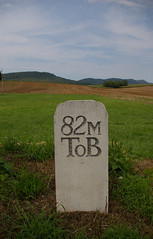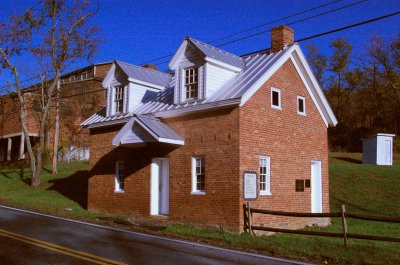
I've always been curious about the row of joists on the front of the Bank Road toll House, on the National Road, just west of Hancock, Maryland, at the western edge of Washington County. There was just something about them that felt wrong. Additionally, the tollhouse seemed too close to the road.

The joists can be seen a bit better in this detail, taken from the above photograph.
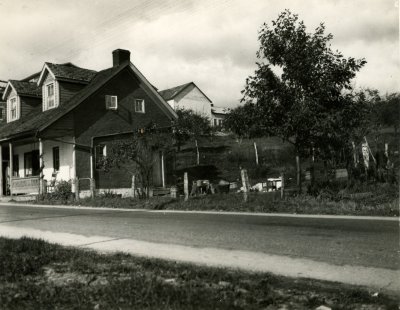
Courtesy of the Enoch Pratt Free Library, Central Library / State Library Resource Center, Baltimore, Maryland
I found this photograph, taken by the Maryland State Department of Forestry, in November of 1936, which helps explain what happened. The road was widened, and rather than move the building, the porch was eliminated. With the porch present, the dimensions of the toll house seem more appropriate with one would expect of a structure from this region and time.
Also note that the toll house originally had gutters. It seems that the present lack of them may eventually cause structural issues for the building. In addition, they seem to tie together the visual appeal of the tollhouse.
I'm torn, as a historic preservationist, whether to advocate having the building moved and returned to its original state, or to advocate leaving it in its original location. I'd love to see the road moved, but that is almost impossible. Perhaps a historical marker, from a vantage point similar to the one above, showing it as it was, would help illustrate the situation.
